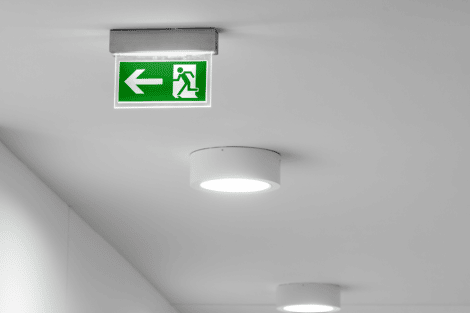 Testing emergency lighting can be a real pain! But why not let the system test itself?
Testing emergency lighting can be a real pain! But why not let the system test itself?
The Australian and NZ Standard AS2293.2 requires that emergency evacuation lighting systems should be inspected and maintained in accordance with relevant procedures specified in the Standard. It sets out the periodic inspection and maintenance necessary to ensure the emergency lighting system will be in a state of readiness for operation at all times.
There can be no argument that emergency lighting is critical to safety! One would therefore think that after the standards have been followed and a good, legally compliant emergency lighting system installed, that a sound testing and maintenance regime would then be followed.
However anecdotal evidence suggests that in many cases emergency lighting testing and maintenance is not receiving the attention it should!
Why do we need to test?
If there is a power failure the emergency lighting systems needs to operate to allow people to exit a building safely.
When any equipment is poorly maintained it will stop working as intended. If emergency lighting is installed and then neglected, sooner or later a lamp or battery will fail. Without regular testing and maintenance of issues detected, the system could fail when it’s needed – in an emergency situation!
So what is the problem?
The majority of building and business owners accept the need for testing so what is the problem in making sure that testing is carried out properly.
Testing can be carried out manually or automatically.
Without doubt manual testing of emergency lights is time consuming and laborious. In larger buildings this often requires several qualified technicians or trained staff, and can seem never-ending. As well as being costly it is also very disruptive, particularly in buildings such as hospitals or schools.
Regardless of how systematic the testing may be, with manual emergency lighting testing, there is always the possibility of ‘human error’. Mistakes can and do happen.
The Advantages of Automatic Testing
There are a variety of automatic testing systems available.
The simplest is the standalone kinds which has LED indicators on the luminaires to advise the results of automatic tests. This type of testing can only be used for self-contained luminaires with their own emergency batteries. For standalone testing it is important that adjacent luminaires do not test at the same time as this would leave an area without emergency lighting while batteries are re-charging. It is essential therefore to find a way around this problem. With this very basic type of automatic testing the results of tests still need to be recorded and entered into a logbook.
More advanced systems, such as the one recommended by Intelligent Environments Ltd, allow the programming of tests from a central maintenance PC displaying a visual representation of the emergency lighting system, allowing the scheduling of tests, recording the results, and providing reports to maintenance engineers as to which luminaires are faulty, the nature of the faults, and the locations of those luminaires.
With automatic emergency lighting testing the system can be tested at a safe time that does not put occupants in the building at risk should a mains failure occur following a test.
Fully automatic emergency lighting testing is not only more efficient and less disruptive, but can provide substantial ongoing savings compared to manual test or standalone automatic test regimes.
If you are undertaking a major renovation, or contemplating building new commercial premises, speak to us about how emergency lighting controls can allow automatic testing and reporting on the system.


